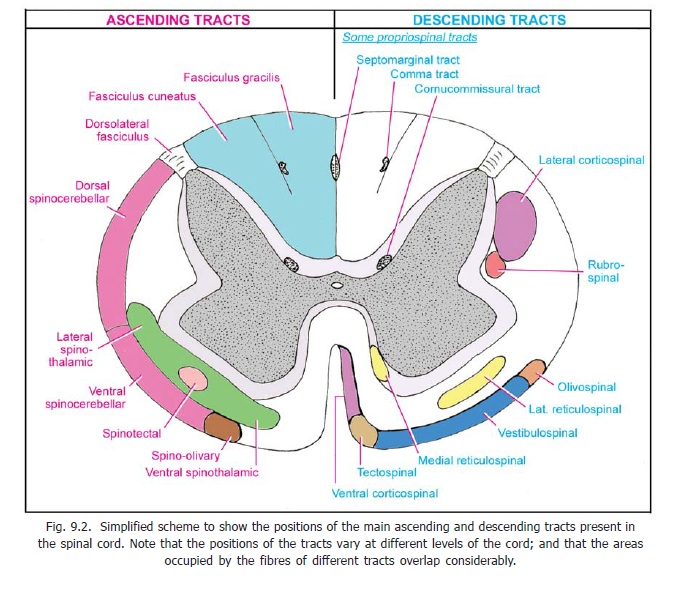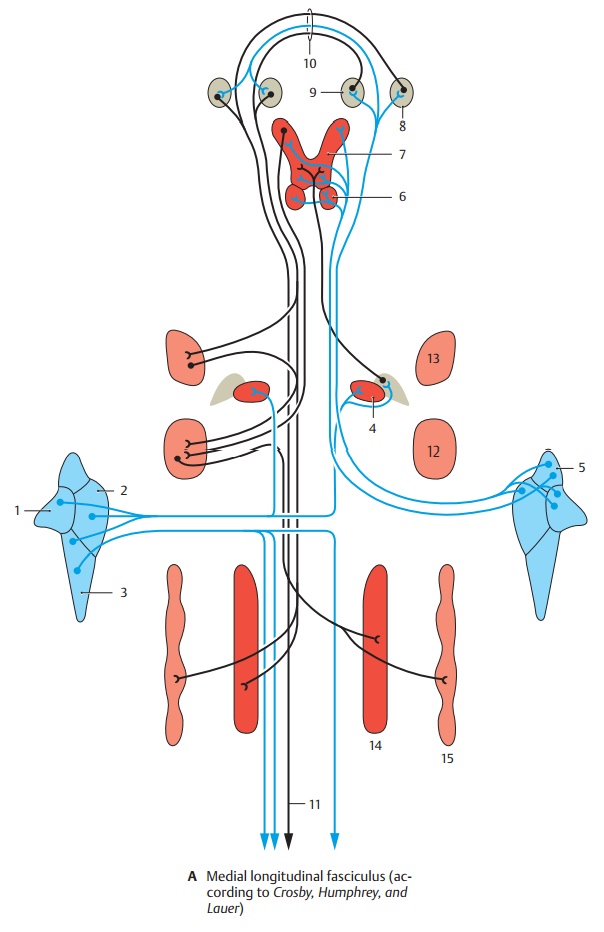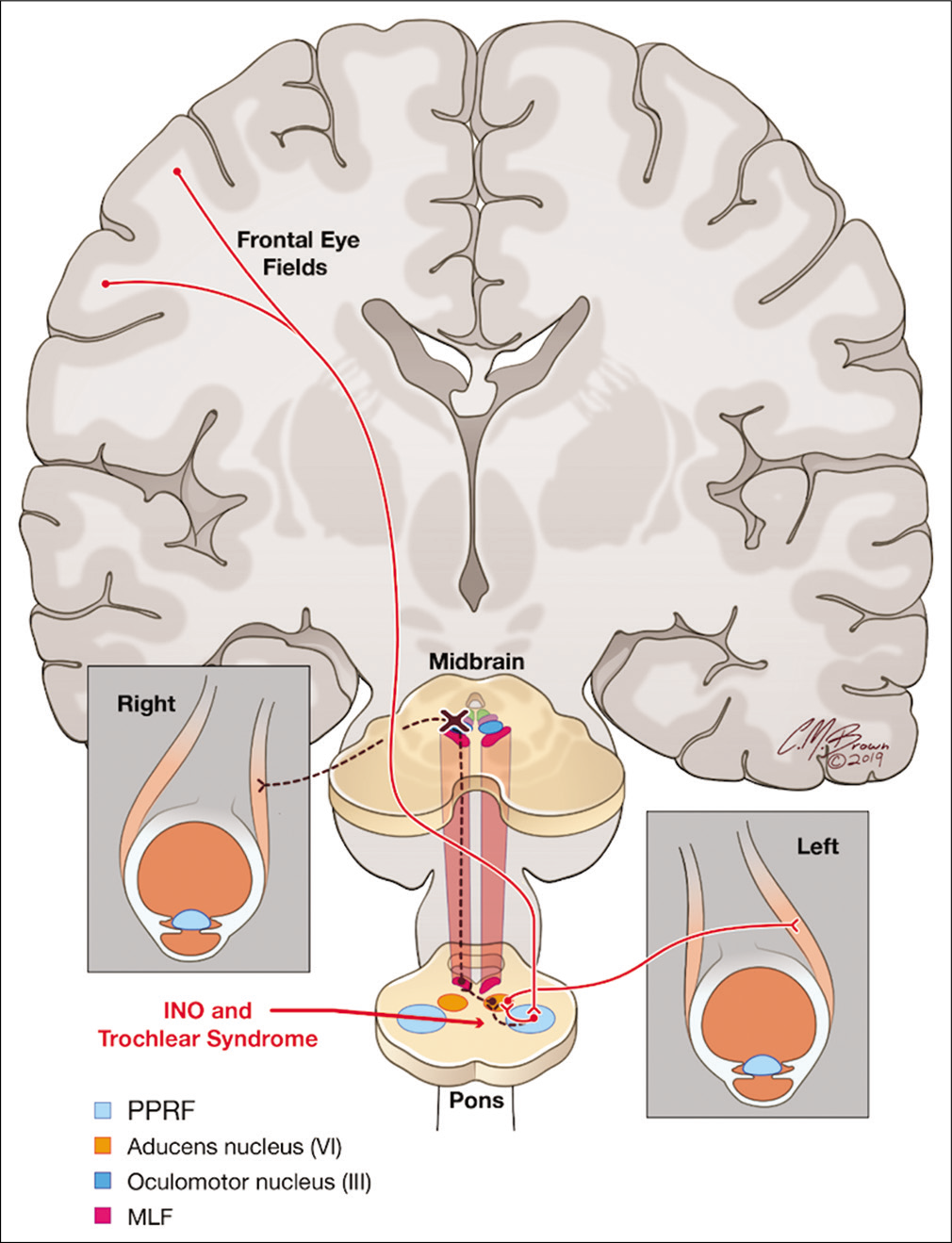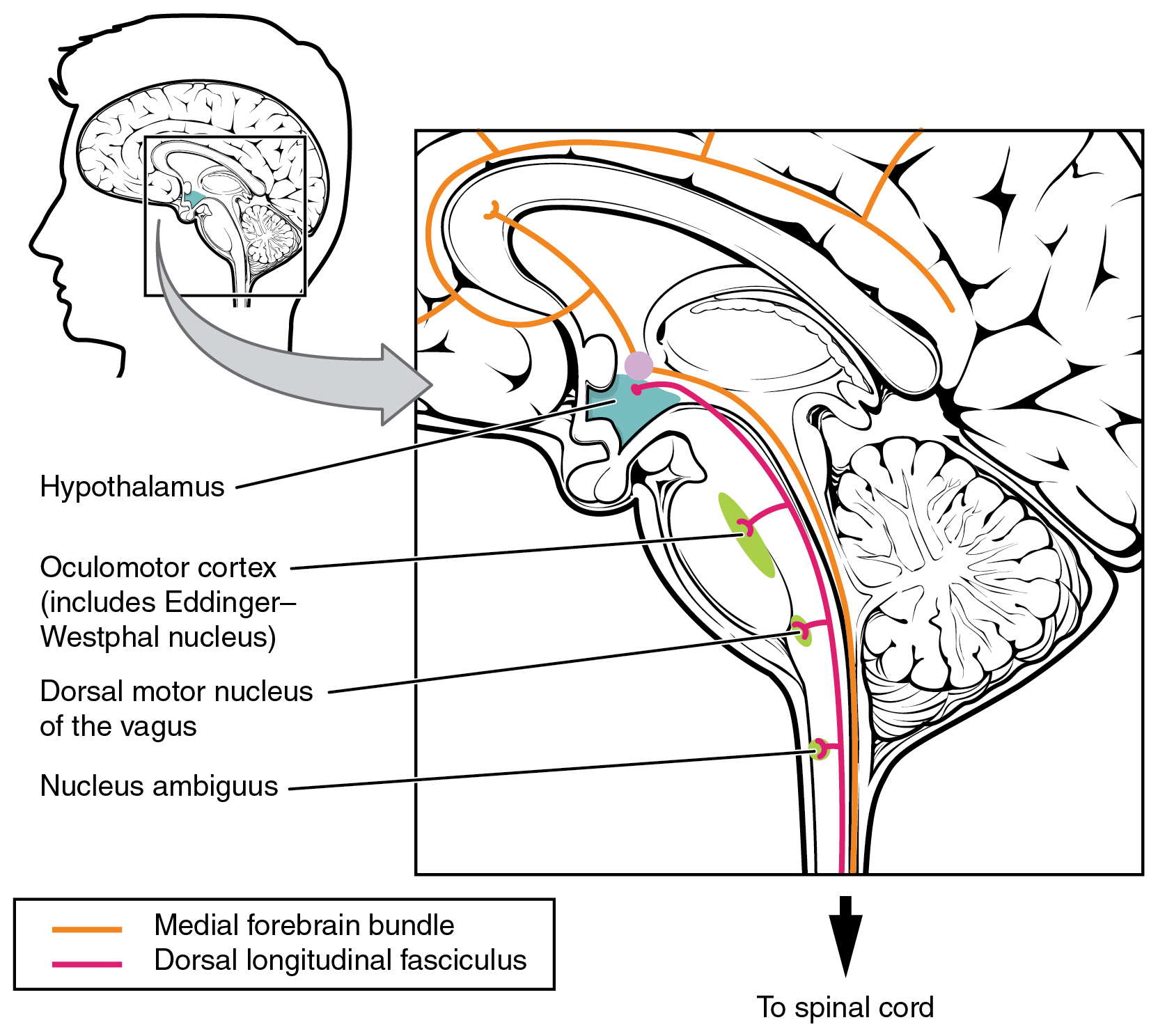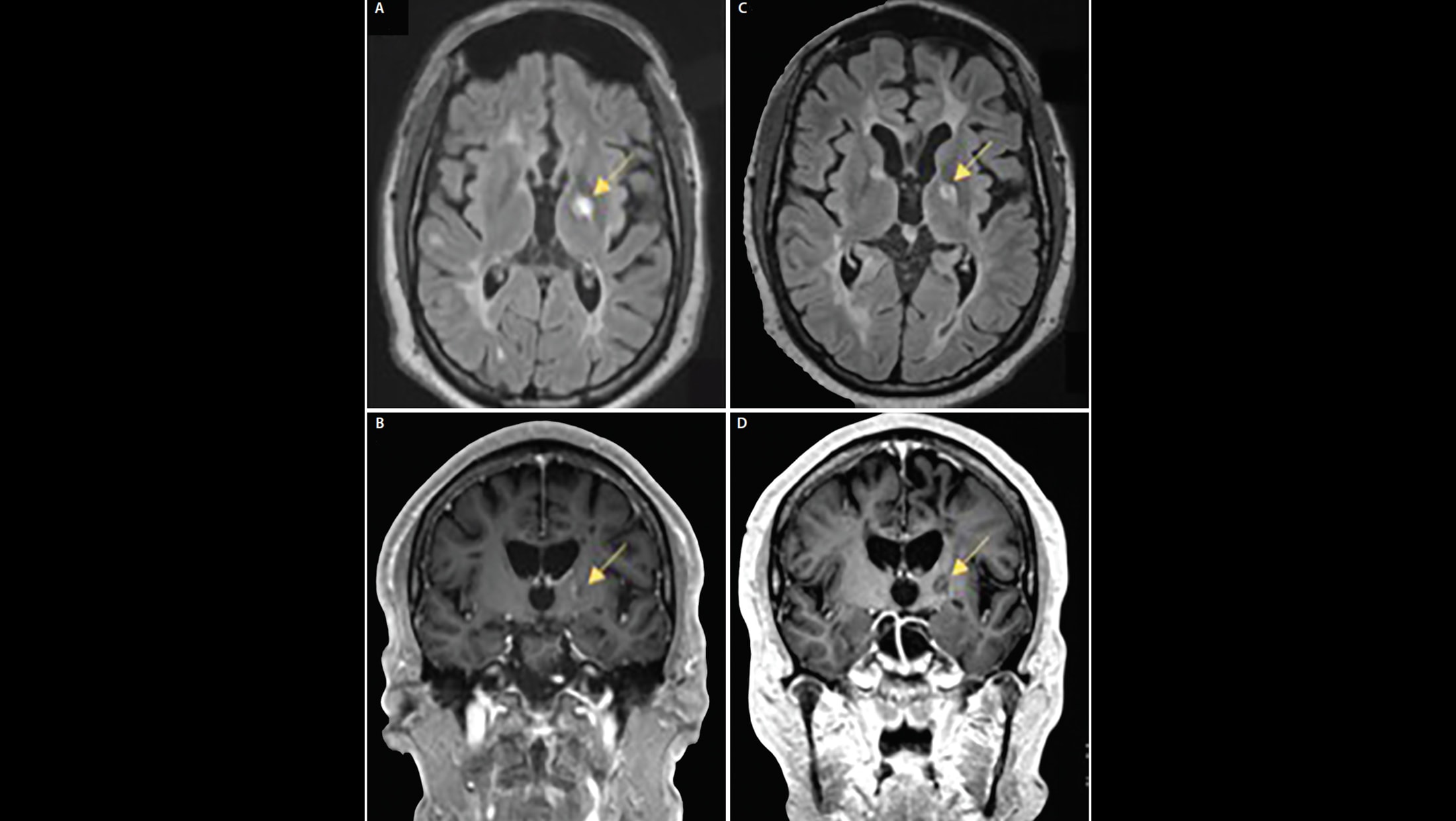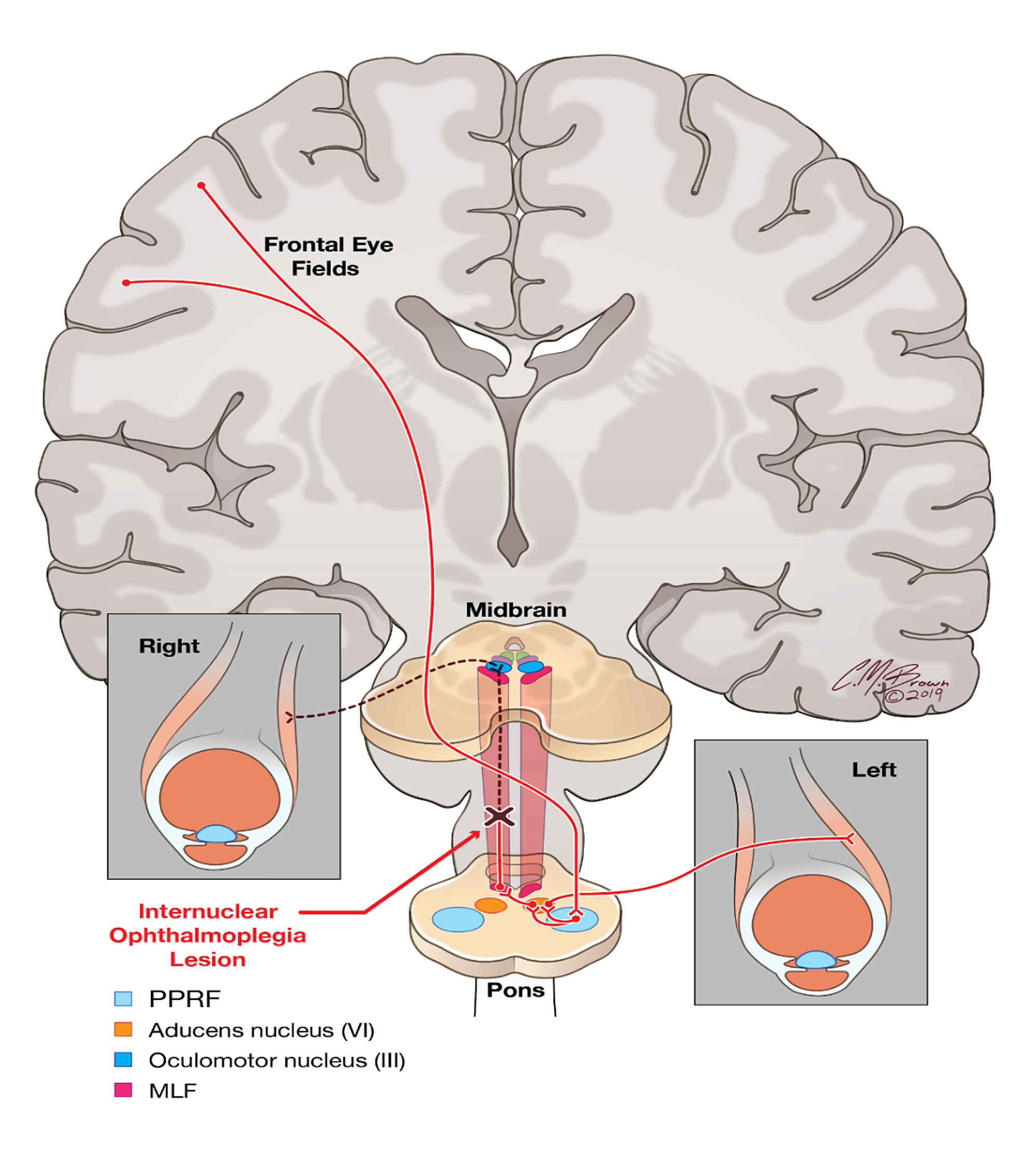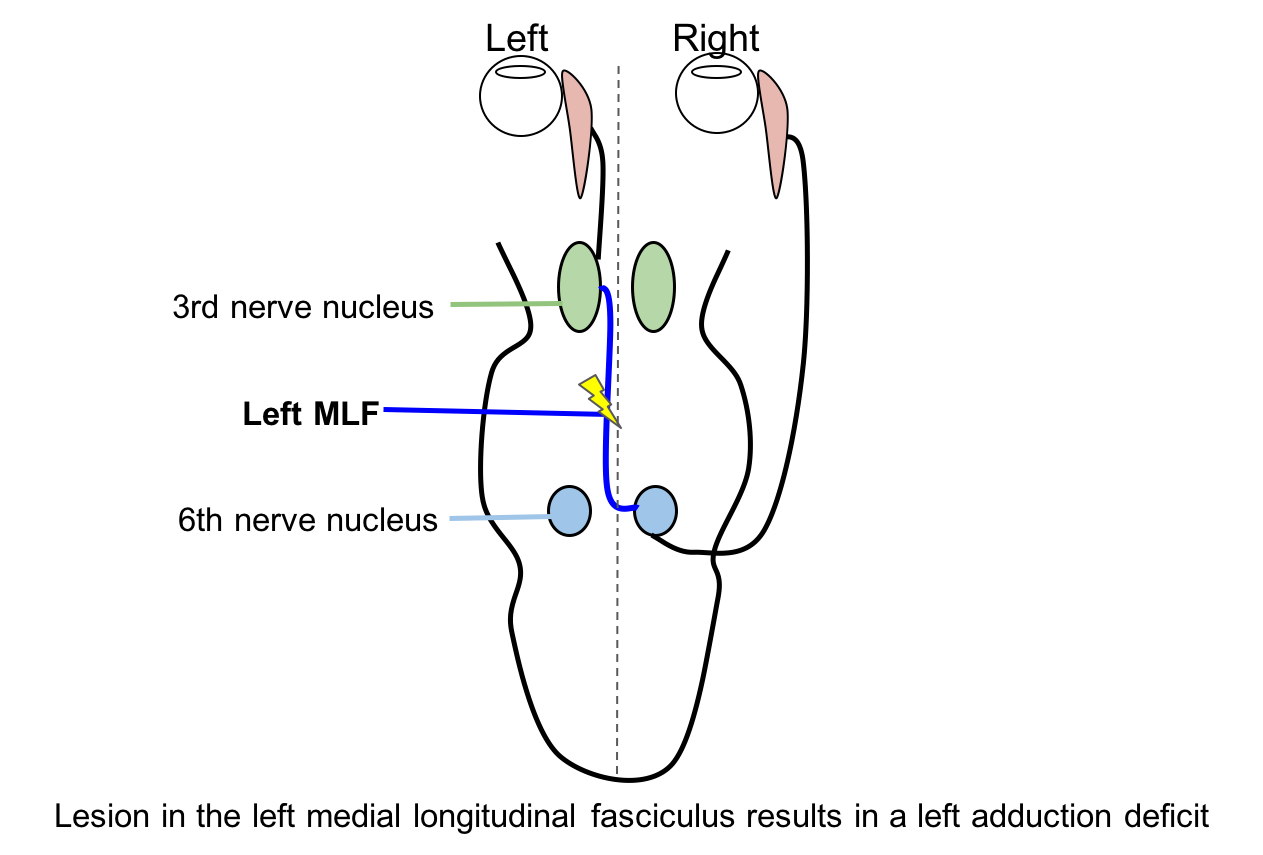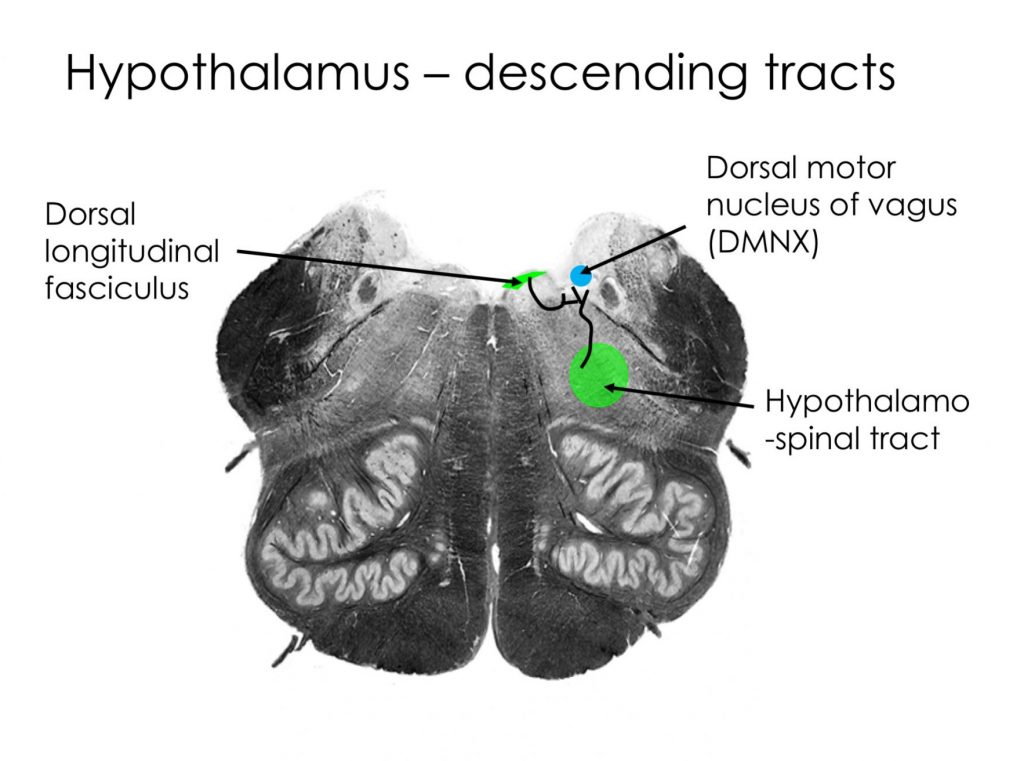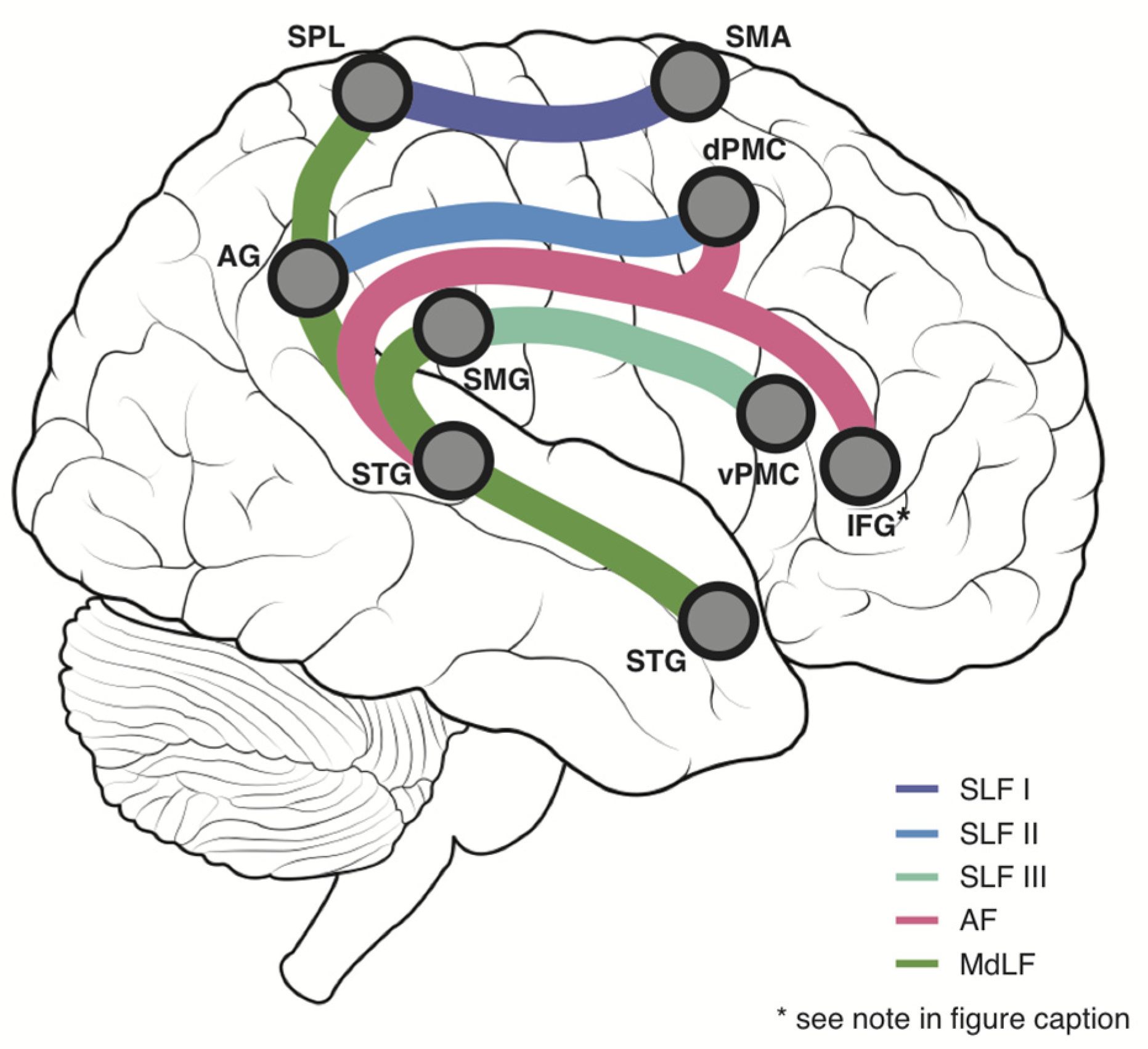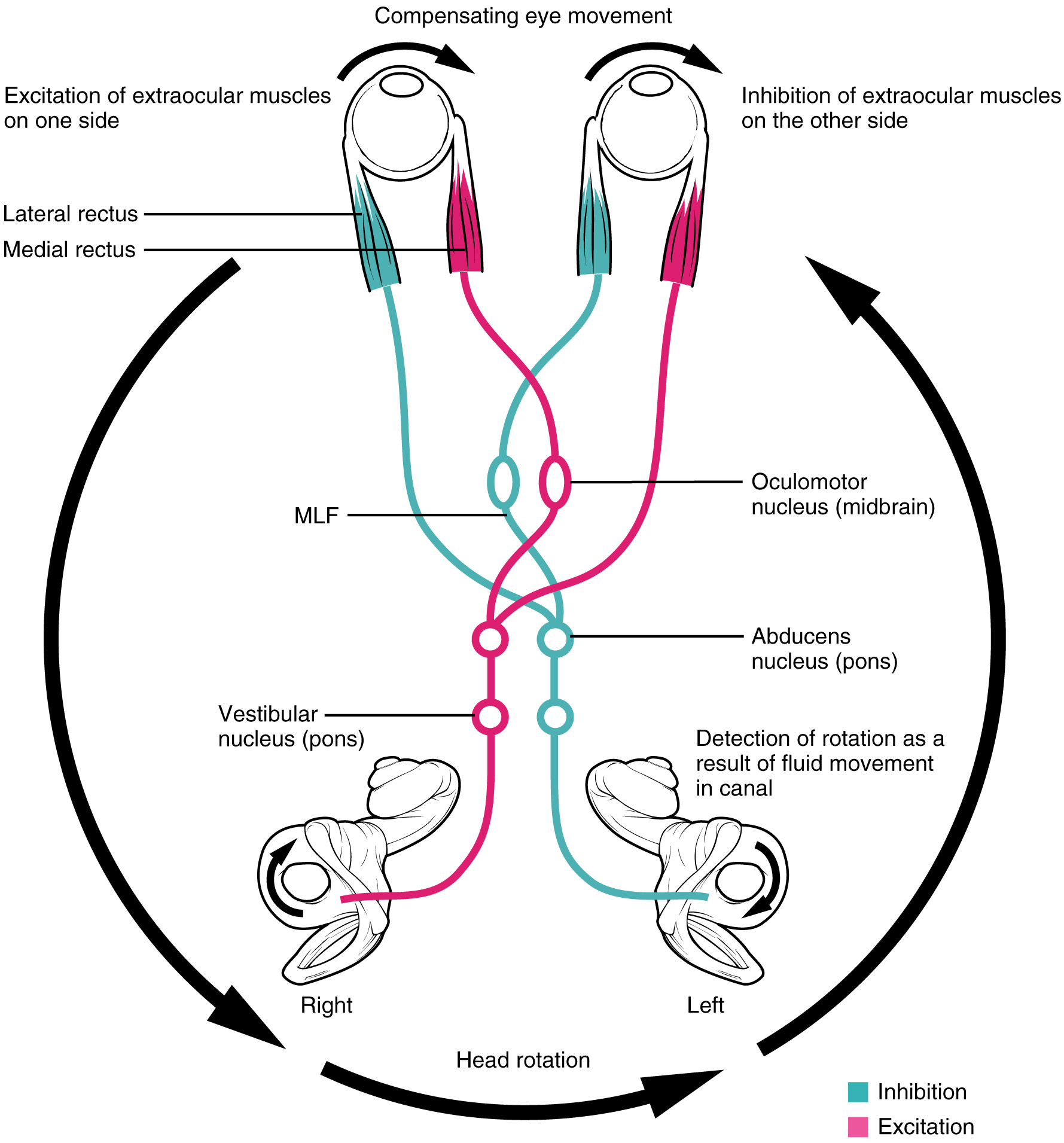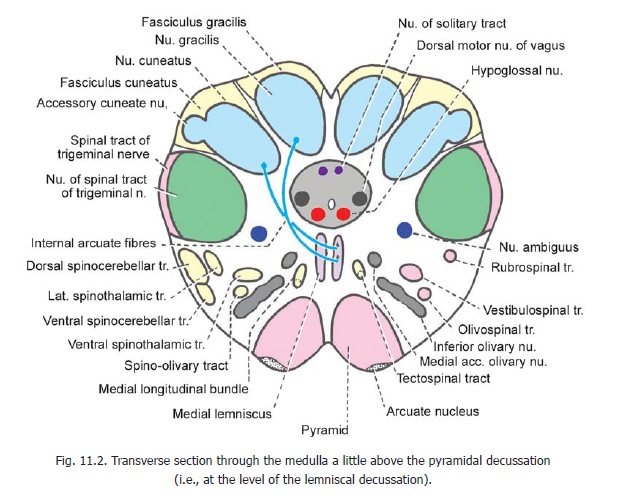Fixation movements of the eyes.Anterior to this, the medial longitudinal fasciculus can be seen.
Usually this indicates ipsilateral spinocerebellar pathway involvment (a lateral structure).The medial longitudinal fasciculus is a key structure for conjugate horizontal eye movements by relaying signals.The medial longitudinal fasciculus (mlf) is an area of crossed over tracts, on each side of the brainstem.these bundles of axons are situated near the midline of the brainstem.they are made up of both ascending and descending fibers that arise from a number of sources and terminate in different areas, including the superior colliculus, the vestibular nuclei, and the cerebellum.
The medial longitudinal fasciculus (mlf) is organized as a pair of white matter fiber tracts that extend through the brainstem and lie near the midline just ventral to the fourth ventricle (in the medulla and pons) and cerebral aqueduct (in the midbrain).Horizontal and vertical saccades in horizontal saccades, the eyes move horizontally
This pathway is less well understood.From the vertical semicircular canals, primary afferents from cn viii synapse on the vn and ascend into the medial longitudinal fasciculus (mlf) and brachium conjunctivum (not shown) to contact the cn iii and cn iv nuclei and the interstitial nucleus of cajal (inc).However, in this case we know that the midbrain is affected (cn3 palsy) and the red nucleus lies in the medial midbrain just lateral to the cn3 nerve fascicle.
Last update images today Medial Longitudinal Fasciculus Pathway
 Arteta On New Arsenal Contract: 'It Will Happen'
By Fernando Kallas
STUTTGART, Germany, July 4 (Reuters) - Mental preparation and plenty of practice are the most important factors in taking a penalty, Germany midfielder Ilkay Gundogan said as his team gear up for Friday's Euro 2024 quarter-final clash against Spain.
Both teams are heavy favourites and have provided some of the best football in the tournament so far and their clash could come down to a penalty shootout.
Gundogan, 33, said on Thursday that the pressure of taking a penalty is not something that can be replicated in training, but that it's still important to be mentally prepared.
"The key word for me is routine. When you step on to take a penalty, the pressure that exists in a game it's just different than it was in training and obviously to replicate is very, very difficult. I don't believe that you can replicate it in training," Gundogan told a press conference.
"You can train your routine. You can train how you want to approach a penalty. Your breathing, how you get calm... The most crucial thing is to get calm, how to get your heartbeat down.
"Just try to be cool and enjoy the moment of taking a penalty. Which is the most difficult thing because, otherwise anyone would score a penalty."
Gundogan is one of Germany's most experienced players and has taken almost 20 penalties in a successful career between clubs like Borussia Dortmund and Manchester City.
However, he believed anyone who stepped up to take a spot kick should be lauded for their bravery and that even some of the game's greatest players do not always score.
"Even the best takers in the world miss," Gundogan said.
"I automatically think about someone like Harry Kane who has a finishing that is unbelievable but I also remember him missing quite a few penalties.
"So it’s just the circumstances at the end of the day. I missed a lot of penalties in my career so far as well. At the end of the day you just try your best. Sometimes it gets rewarded and you can do it in a better way and sometimes not.
"I think to have the guts to step on, to take a penalty in crucial moments, to show respect for it, even when you miss because it is a situation that is extraordinary and it is very difficult to deal with." (Reporting by Fernando Kallas Editing by Christian Radnedge)
Arteta On New Arsenal Contract: 'It Will Happen'
By Fernando Kallas
STUTTGART, Germany, July 4 (Reuters) - Mental preparation and plenty of practice are the most important factors in taking a penalty, Germany midfielder Ilkay Gundogan said as his team gear up for Friday's Euro 2024 quarter-final clash against Spain.
Both teams are heavy favourites and have provided some of the best football in the tournament so far and their clash could come down to a penalty shootout.
Gundogan, 33, said on Thursday that the pressure of taking a penalty is not something that can be replicated in training, but that it's still important to be mentally prepared.
"The key word for me is routine. When you step on to take a penalty, the pressure that exists in a game it's just different than it was in training and obviously to replicate is very, very difficult. I don't believe that you can replicate it in training," Gundogan told a press conference.
"You can train your routine. You can train how you want to approach a penalty. Your breathing, how you get calm... The most crucial thing is to get calm, how to get your heartbeat down.
"Just try to be cool and enjoy the moment of taking a penalty. Which is the most difficult thing because, otherwise anyone would score a penalty."
Gundogan is one of Germany's most experienced players and has taken almost 20 penalties in a successful career between clubs like Borussia Dortmund and Manchester City.
However, he believed anyone who stepped up to take a spot kick should be lauded for their bravery and that even some of the game's greatest players do not always score.
"Even the best takers in the world miss," Gundogan said.
"I automatically think about someone like Harry Kane who has a finishing that is unbelievable but I also remember him missing quite a few penalties.
"So it’s just the circumstances at the end of the day. I missed a lot of penalties in my career so far as well. At the end of the day you just try your best. Sometimes it gets rewarded and you can do it in a better way and sometimes not.
"I think to have the guts to step on, to take a penalty in crucial moments, to show respect for it, even when you miss because it is a situation that is extraordinary and it is very difficult to deal with." (Reporting by Fernando Kallas Editing by Christian Radnedge)

